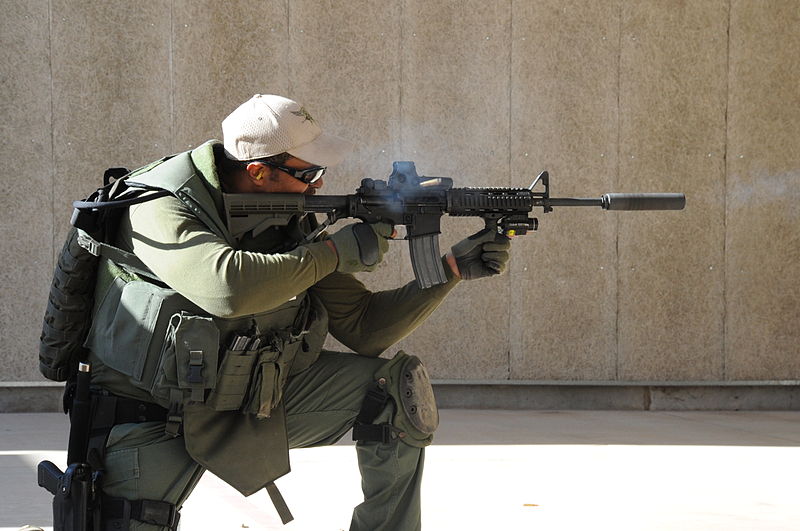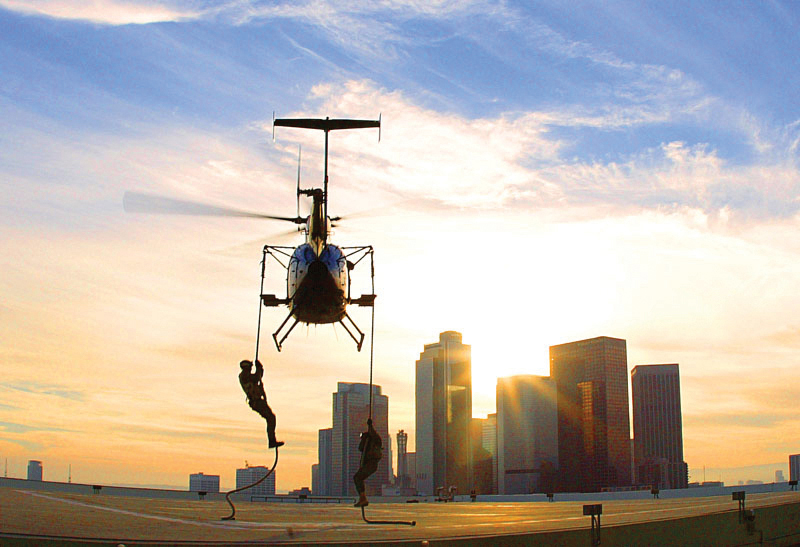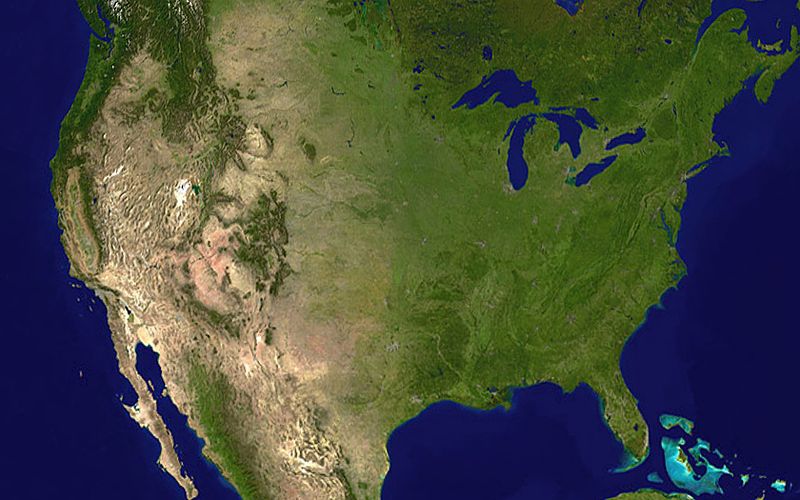…Since the 1960s, in response to a range of perceived threats, law-enforcement agencies across the U.S., at every level of government, have been blurring the line between police officer and soldier. Driven by martial rhetoric and the availability of military-style equipment—from bayonets and M-16 rifles to armored personnel carriers—American police forces have often adopted a mind-set previously reserved for the battlefield. The war on drugs and, more recently, post-9/11 antiterrorism efforts have created a new figure on the U.S. scene: the warrior cop—armed to the teeth, ready to deal harshly with targeted wrongdoers, and a growing threat to familiar American liberties.
The acronym SWAT stands for Special Weapons and Tactics. Such police units are trained in methods similar to those used by the special forces in the military. They learn to break into homes with battering rams and to use incendiary devices called flashbang grenades, which are designed to blind and deafen anyone nearby. Their usual aim is to “clear” a building—that is, to remove any threats and distractions (including pets) and to subdue the occupants as quickly as possible.
The country’s first official SWAT team started in the late 1960s in Los Angeles. By 1975, there were approximately 500 such units. Today, there are thousands. According to surveys conducted by the criminologist Peter Kraska of Eastern Kentucky University, just 13% of towns between 25,000 and 50,000 people had a SWAT team in 1983. By 2005, the figure was up to 80%.
The number of raids conducted by SWAT-like police units has grown accordingly. In the 1970s, there were just a few hundred a year; by the early 1980s, there were some 3,000 a year. In 2005 (the last year for which Dr. Kraska collected data), there were approximately 50,000 raids.
A number of federal agencies also now have their own SWAT teams, including the Fish & Wildlife Service, NASA and the Department of the Interior. In 2011, the Department of Education’s SWAT team bungled a raid on a woman who was initially reported to be under investigation for not paying her student loans, though the agency later said she was suspected of defrauding the federal student loan program.
The details of the case aside, the story generated headlines because of the revelation that the Department of Education had such a unit. None of these federal departments has responded to my requests for information about why they consider such high-powered military-style teams necessary.
Americans have long been wary of using the military for domestic policing. Concerns about potential abuse date back to the creation of the Constitution, when the founders worried about standing armies and the intimidation of the people at large by an overzealous executive, who might choose to follow the unhappy precedents set by Europe’s emperors and monarchs.
The idea for the first SWAT team in Los Angeles arose during the domestic strife and civil unrest of the mid-1960s. Daryl Gates, then an inspector with the Los Angeles Police Department, had grown frustrated with his department’s inability to respond effectively to incidents like the 1965 Watts riots. So his thoughts turned to the military. He was drawn in particular to Marine Special Forces and began to envision an elite group of police officers who could respond in a similar manner to dangerous domestic disturbances.
…Consider today’s police recruitment videos (widely available on YouTube), which often feature cops rappelling from helicopters, shooting big guns, kicking down doors and tackling suspects. Such campaigns embody an American policing culture that has become too isolated, confrontational and militaristic, and they tend to attract recruits for the wrong reasons.
If you browse online police discussion boards, or chat with younger cops today, you will often encounter some version of the phrase, “Whatever I need to do to get home safe.” It is a sentiment that suggests that every interaction with a citizen may be the officer’s last. Nor does it help when political leaders lend support to this militaristic self-image, as New York City Mayor Michael Bloomberg did in 2011 by declaring, “I have my own army in the NYPD—the seventh largest army in the world.”
The Wall Street Journal has the full article
(Photos: Wikipedia)












